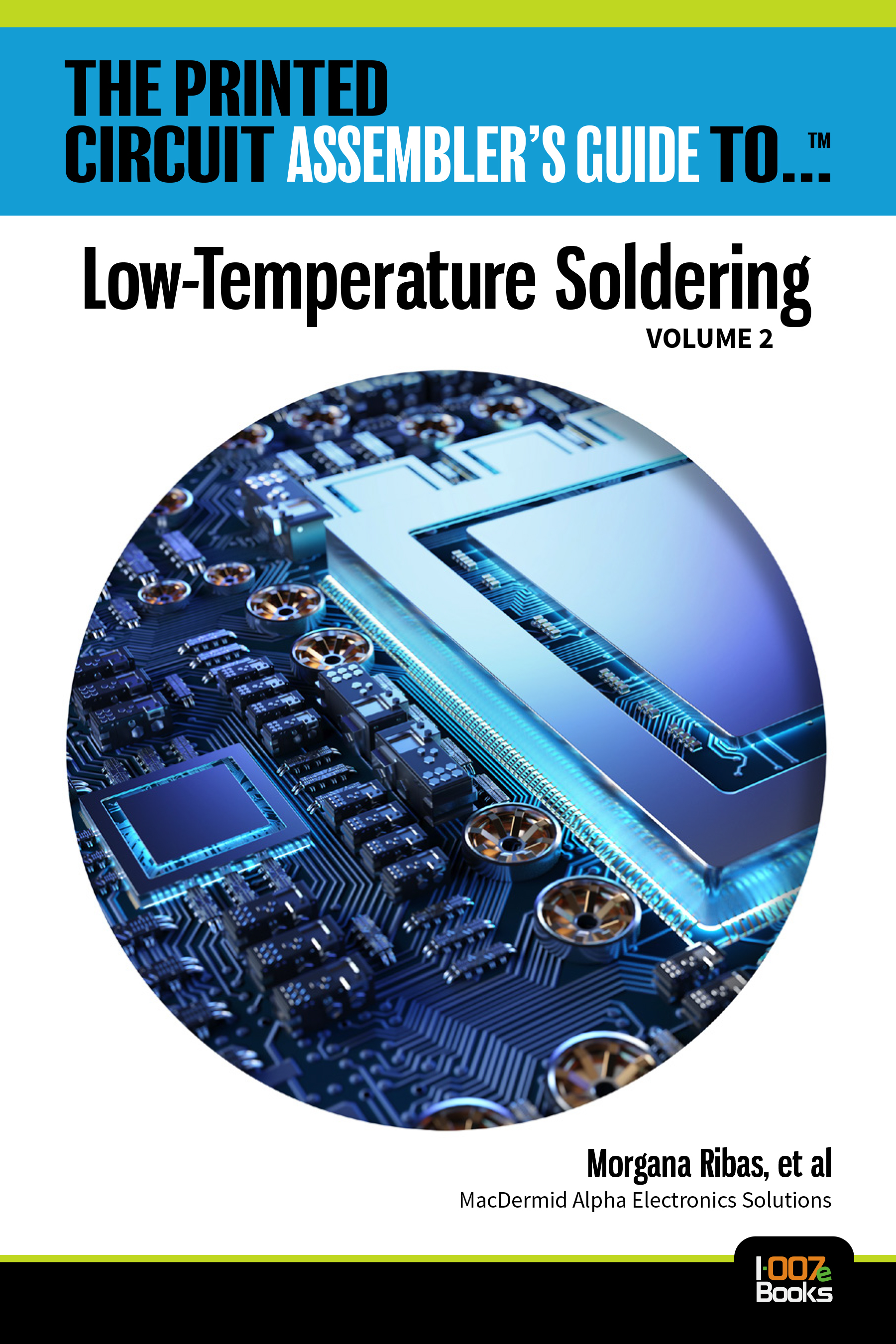-

- News
- Books
Featured Books
- design007 Magazine
Latest Issues
Current Issue
Training New Designers
Where will we find the next generation of PCB designers and design engineers? Once we locate them, how will we train and educate them? What will PCB designers of the future need to master to deal with tomorrow’s technology?

The Designer of the Future
Our expert contributors peer into their crystal balls and offer their thoughts on the designers and design engineers of tomorrow, and what their jobs will look like.

Advanced Packaging and Stackup Design
This month, our expert contributors discuss the impact of advanced packaging on stackup design—from SI and DFM challenges through the variety of material tradeoffs that designers must contend with in HDI and UHDI.
- Articles
- Columns
Search Console
- Links
- Media kit
||| MENU - design007 Magazine
New Approach Brings Industry a Step Closer to Transparent Electronics
April 8, 2021 | FleetEstimated reading time: 3 minutes
A new study could pave the way to revolutionary, transparent electronics.
Such see-through devices could potentially be integrated in glass, in flexible displays and in smart contact lenses, bringing to life futuristic devices that seem like the product of science fiction.
For several decades, researchers have sought a new class of electronics based on semiconducting oxides, whose optical transparency could enable these fully-transparent electronics.
Oxide-based devices could also find use in power electronics and communication technology, reducing the carbon footprint of our utility networks.
A RMIT-led team has now introduced ultrathin beta-tellurite to the two-dimensional (2D) semiconducting material family, providing an answer to this decades-long search for a high mobility p-type oxide.
“This new, high-mobility p-type oxide fills a crucial gap in the materials spectrum to enable fast, transparent circuits,” says team leader Dr Torben Daeneke, who led the collaboration across three FLEET nodes.
Other key advantages of the long-sought-after oxide-based semiconductors are their stability in air, less-stringent purity requirements, low costs and easy deposition.
“In our advance, the missing link was finding the right, ‘positive’ approach,” says Torben.
Positivity Has Been Lacking
There are two types of semiconducting materials. ‘N-type’ materials have abundant negatively-charged electrons, while ‘p-type’ semiconductors possess plenty of positively-charged holes.
It’s the stacking together of complementary n-type and p-type materials that allows electronic devices such as diodes, rectifiers and logic circuits.
Modern life is critically reliant on these materials since they are the building blocks of every computer and smartphone.
A barrier to oxide devices has been that while many high-performance n-type oxides are known, there is a significant lack of high-quality p-type oxides.
Theory Prompts Action
However in 2018 a computational study revealed that beta-tellurite (?-TeO2) could be an attractive p-type oxide candidate, with tellurium’s peculiar place in the periodic table meaning it can behave as both a metal and a non-metal, providing its oxide with uniquely useful properties.
“This prediction encouraged our group at RMIT University to explore its properties and applications,” says Dr Torben Daeneke, who is a FLEET associate investigator.
Liquid Metal – Pathway to Explore 2D Materials
Dr Daeneke’s team demonstrated the isolation of beta-tellurite with a specifically developed synthesis technique that relies on liquid metal chemistry.
“A molten mixture of tellurium (Te) and selenium (Se) is prepared and allowed to roll over a surface,” explains co-first author Patjaree Aukarasereenont.
“Thanks to the oxygen in ambient air, the molten droplet naturally forms a thin surface oxide layer of beta-tellurite. As the liquid droplet is rolled over the surface, this oxide layer sticks to it, depositing atomically thin oxide sheets in its way.”
“The process is similar to drawing: you use a glass rod as a pen and the liquid metal is your ink,” explains Ms Aukarasereenont, who is a FLEET PhD student at RMIT.
While the desirable ?-phase of tellurite grows below 300 °C, pure tellurium has a high melting point, above 500 °C. Therefore, selenium was added to design an alloy that has a lower melting point, making the synthesis possible.
“The ultrathin sheets we obtained are just 1.5 nanometres thick – corresponding to only few atoms. The material was highly transparent across the visible spectrum, having a bandgap of 3.7 eV which means that they are essentially invisible to the human eye” explains co-author Dr Ali Zavabeti.
Assessing Beta-Tellurite: Up to 100 Times Faster
To assess the electronic properties of the developed materials, field-effect transistors (FETs) were fabricated.
“These devices showed characteristic p-type switching as well as a high hole mobility (roughly 140 cm2V-1s-1), showing that beta-tellurite is ten to one hundred times faster than existing p-type oxide semiconductors. The excellent on/off ratio (over 106) also attests the material is suitable for power efficient, fast devices” Ms Patjaree Aukarasereenont said.
“The findings close a crucial gap in the electronic material library,” Dr Ali Zavabeti said.
“Having a fast, transparent p-type semiconductor at our disposal has the potential to revolutionise transparent electronics, while also enabling better displays and improved energy-efficient devices.”
The team plans to further explore the potential of this novel semiconductor. “Our further investigations of this exciting material will explore integration in existing and next-generation consumer electronics,” says Dr Torben Daeneke.
Read the original article, here.
Suggested Items
J.A.M.E.S. Explores the Future of Additive Manufactured Electronics
02/18/2025 | Marcy LaRont, I-Connect007Andreas Salomon is chief scientist at J.A.M.E.S, a joint venture of Nano Dimension and HENSOLD. In this interview he discusses the evolving landscape of additively manufactured electronics, highlighting the integration of cutting-edge technologies, such as micro-dispensing and ink jetting. These technologies enhance capabilities in signal integrity and miniaturization. He also talks about the importance of sustainability, the need for standardized testing, and collaboration among industry leaders that will drive innovation and transform the future of electronics manufacturing through IPC’s standards development.
Sunny Kwok Joins Ventec as Technical Sales Representative for UK and EMEA
02/14/2025 | VentecVentec is pleased to announce the appointment of Sunny Kwok as Technical Sales Representative for UK and EMEA regions. Sunny will further enhance service support levels for Ventec full range of materials including non-reinforced resin coated copper and film products (thermal/Pro-bond), high speed/low loss (tec-speed) and Ventec’s full range of halogen free materials for high reliability applications.
Unveiling the Future: Insights on Next-Gen Megtron Materials
02/13/2025 | Marcy LaRont, I-Connect007In this interview from DesignCon, Jim Kenny, OEM business development manager at Panasonic, touches on next-generation Megtron materials and delves into the industry's growing demand for high-speed, low-loss laminate systems, particularly in light of the anticipated 224 gigabits per second technology. With a focus on material development and production timelines, Jim highlights the challenges and opportunities in meeting customer needs while also maintaining quality and supply chain stability. As Panasonic prepares for the evolving landscape, they remain committed to innovating in this competitive market.
DuPont to Discuss Development of EUV Photoresists at SPIE Advanced Lithography + Patterning Conference
02/13/2025 | DuPontDuPont today announced its participation in the 2025 SPIE Advanced Lithography + Patterning conference, taking place Feb. 24–28 in San Jose, California. DuPont will showcase its latest innovations through technical presentations focused on the development of photoresists for extreme ultraviolet (EUV) lithography and advancing sustainability in the design of lithographic materials.
IPC Hall of Fame Spotlight Series: Highlighting Doug Pauls
02/12/2025 | Dan Feinberg, Technology Editor, I-Connect007Over the years, IPC members who have contributed significantly to IPC and our industry have been awarded the IPC Raymond E. Pritchard Hall of Fame (HOF) Award. Though many early HOF members have passed away and are unknown to today’s IPC membership, their contributions still resonate. This special series on IPC Hall of Fame members provides a reminder of who was honored and why. As a bonus, for those who are still around, we get to find out what these talented individuals are up to today.


